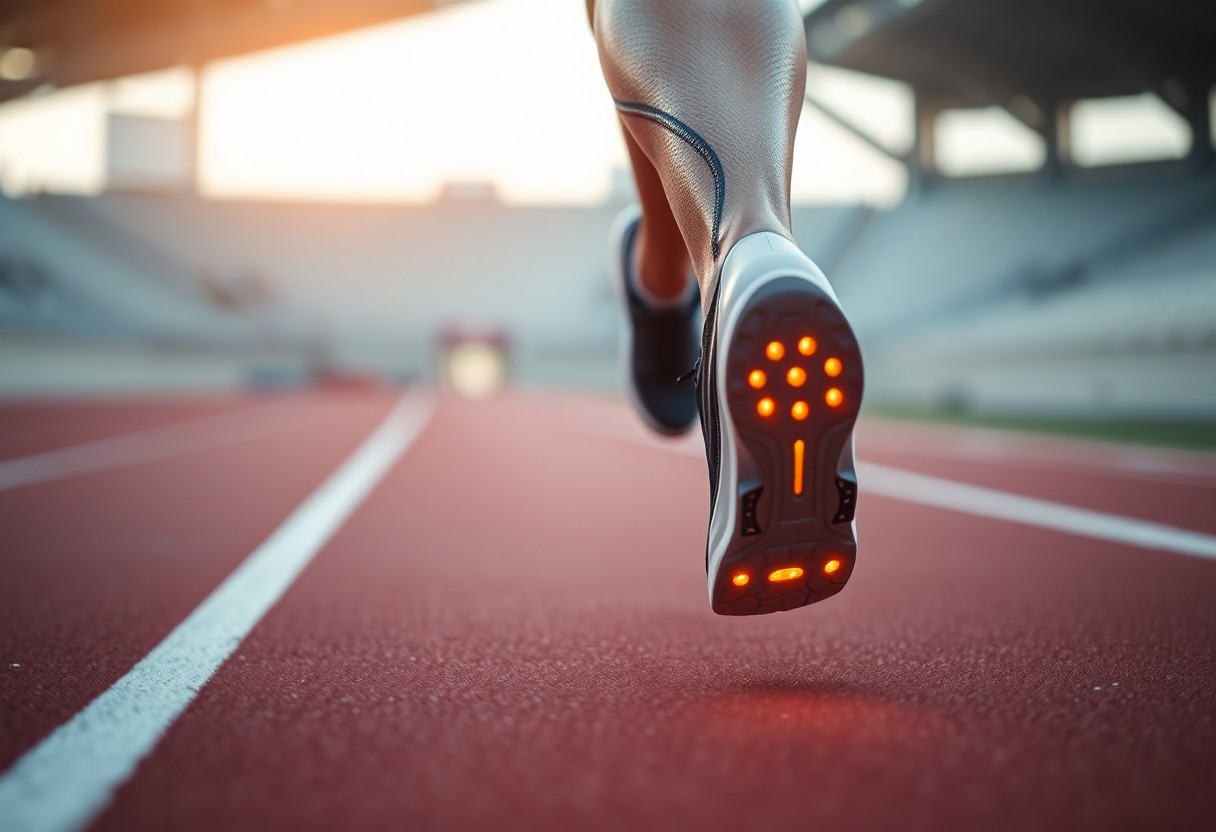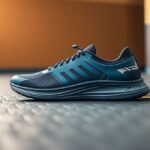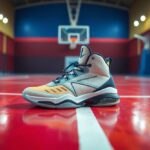
Delve into the revolutionary advancements in running footwear technology that are reshaping the performance landscape for endurance athletes. Discover how these innovations are not just enhancing comfort but also significantly improving athletic outcomes.
The optimisation of performance in endurance running has been fundamentally transformed by advanced footwear technology, presenting you with extraordinary opportunities to unlock your athletic capabilities. You’ll learn how state-of-the-art shoe designs can significantly lower your metabolic expenditure and enhance your running economy. By incorporating carbon fibre plates and pioneering midsole materials, these shoes offer exceptional energy return mechanisms that can reduce your oxygen consumption by as much as 4%. Whether you’re a seasoned professional or a passionate amateur, grasping these biomechanical advancements can empower you to make knowledgeable choices about your running gear, subsequently improving your race times.
 Continue reading to explore further the intricate mechanics behind running footwear that promise to elevate your performance:
Continue reading to explore further the intricate mechanics behind running footwear that promise to elevate your performance:
Discovering the Mechanics of Energy Return in Advanced Running Shoes
Advanced running shoe technology employs sophisticated biomechanical principles to enhance energy transfer during movement. The innovative design elements function in harmony to reduce metabolic expenditure, forming a complex system that boosts running efficiency through strategic material engineering and geometric design. By concentrating on the dynamics of energy return, these shoes provide runners with a considerable advantage, enhancing both performance and stamina. This enables longer runs with less fatigue, allowing athletes to push their limits further than ever before.
Diving into the Curvature Dynamics of Carbon Fibre Plates
Carbon fibre plates utilise precise geometric engineering to optimise the redirection of kinetic energy throughout the running motion. With optimal curvature angles ranging from 12° to 15°, these plates facilitate maximum energy storage and return, with finite element modelling indicating energy return efficiencies of up to 93% in prototype configurations. The design of these plates creates a spring-like effect that significantly diminishes muscular effort during the toe-off phases, thereby allowing runners to conserve energy over extended distances, ultimately boosting endurance and overall performance.
Evaluating TPU and EVA in Midsole Innovations
The choice of materials has a profound impact on shoe performance, with thermoplastic polyurethane (TPU) emerging as a leading midsole technology. Comparative studies highlight TPU’s notable advantages in both energy return and impact absorption, equipping runners with improved biomechanical efficiency across diverse running conditions. The decision between TPU and EVA foam is crucial for athletes seeking to optimise performance while minimising the risk of injuries during both training and competitive events.
| Energy Return | 18% higher with TPU |
| Oxygen Consumption Reduction | 2.4% lower with TPU |
A thorough examination of midsole materials reveals intricate performance characteristics. TPU exhibits superior resilience when compared to traditional EVA foam, consistently maintaining its mechanical properties over thousands of compression cycles. Runners benefit from more reliable energy return, decreased fatigue, and enhanced performance during long-distance events, as advanced material science innovations can significantly influence their overall training outcomes and competitive performances.
| Impact Absorption | TPU absorbs 37% more force |
| Rebound Elasticity | 89% sustained across 50,000 cycles |
 Explore further as we investigate the implications of advanced footwear technology on metabolic efficiency:
Explore further as we investigate the implications of advanced footwear technology on metabolic efficiency:
Evaluating Metabolic Efficiency: Identifying Who Gains the Most from Advanced Footwear
Advanced footwear technology does not uniformly benefit all runners. Gains in metabolic efficiency vary considerably across different demographic groups, with elements such as gender, age, and individual biomechanics playing pivotal roles in enhancing performance. Research has unveiled intricate patterns of metabolic response, indicating that the advantages of super shoes extend beyond basic performance metrics, encompassing complex physiological adaptations that are specific to each runner’s unique biomechanical profile.
Investigating Gender-Specific Performance Enhancements
Female runners experience a 3.2% improvement in metabolic power in contrast to 4.2% for males, suggesting that complex neuromuscular adaptations come into play. Analysis of pelvic kinematics has shown a 14% reduction in hip adduction angle among females when utilising advanced footwear, which may clarify the subtle discrepancies in metabolic benefits observed between genders. Understanding these variations can facilitate tailored training and footwear selections that maximise performance advantages for each gender.
Exploring Age-Related Benefits and Endurance Performance
Masters athletes aged 40 and over exhibit a 2.8% greater reduction in oxygen cost when using super shoes, likely compensating for a decrease in tendon elasticity. Analysis of tibial loading indicates a 12% reduction in cumulative stress per kilometre for older runners, suggesting potential advantages in preventing injuries and maintaining performance. These insights underscore the significance of advanced footwear technology in prolonging the competitive lifespan of older athletes.
The advantages of advanced footwear technology related to age extend well beyond mere performance metrics. Biomechanical studies reveal that older runners demonstrate more marked adaptations due to compensatory mechanisms. Decreased tendon stiffness and altered muscle recruitment patterns interact with shoe technology to forge a distinct performance enhancement profile. Notably, the energy return mechanism of the carbon plate appears to counterbalance age-related biomechanical inefficiencies, potentially extending competitive running careers by alleviating the physiological constraints typically faced by aging athletes.
Continue reading to discover more about the repercussions of advanced footwear technology on injury risks:
Examining the Relationship Between Running Footwear and Injury Risk
Advanced footwear technology introduces a range of intricate biomechanical interactions, necessitating a detailed examination of potential injury risks. Runners must carefully weigh the benefits of performance enhancement against physiological adaptations. Long-term studies illustrate subtle yet significant shifts in muscular recruitment patterns, joint loading, and proprioceptive feedback when transitioning to high-performance running shoes, highlighting the necessity for a balanced approach to both training and recovery.
Injury Assessment: The Trade-Offs of Enhanced Performance
Biomechanical research suggests a 9% increase in Achilles tendon strain rates among users of super shoes during high-intensity training. Plantar pressure mapping indicates a 22% increase in forefoot loading when compared to traditional trainers, particularly in challenging conditions such as downhill running. These findings imply that while metabolic efficiency may improve, runners should implement targeted strength and adaptation protocols to mitigate associated injury risks and safeguard long-term athletic health.
Modifying Training Protocols for Optimal Gait Adjustments
Your biomechanical response to advanced footwear necessitates strategic adjustments in your training regimen. Gait retraining becomes essential to harness the unique energy return mechanisms of carbon-plated shoes. Runners must concentrate on developing neuromuscular patterns that align with the shoe’s biomechanical design, potentially reducing injury risk while maximising performance benefits.
Comprehensive gait adaptation strategies require multifaceted approaches to effectively integrate advanced footwear technology. Biomechanical analysis indicates that runners typically need around 6-8 weeks of progressive training to fully adapt to the distinctive mechanical properties of super shoes. This adaptation phase involves targeted eccentric strengthening protocols, adjusted interval training techniques, and careful monitoring of lower limb biomechanics. Professional athletes and serious runners stand to gain from periodic 3D gait analysis to track subtle shifts in movement patterns, ensuring optimal integration of advanced footwear technology with their individual biomechanical characteristics.
 Explore the future of footwear technology and its implications for runners:
Explore the future of footwear technology and its implications for runners:
Investigating Future Innovations in Running Footwear Technology
Innovative technologies are set to revolutionise running shoe design, pushing the frontiers of biomechanical efficiency and performance optimisation. Cutting-edge research is centred on personalised solutions that adapt to individual biomechanics, harnessing advanced materials, computational modelling, and integrated sensor technologies to create a new generation of intelligent footwear tailored for elite athletes.
Transforming Footwear Design with 3D Printed Midsoles
Optimisation algorithms for lattice structures now permit precise variations in regional stiffness to align with individual foot pressure maps. Prototype evaluations indicate a 5.1% increase in metabolic savings as compared to mass-produced models, with computational design facilitating unprecedented customisation of midsole geometries that maximise energy return while minimising biomechanical stress. This innovative strategy ensures that each runner can achieve optimal performance personalised to their specific physical attributes.
Integrating Smart Technology for Enhanced Performance Monitoring
Emerging sensor technologies are transforming running shoes into advanced performance tracking devices. Real-time feedback systems for ground reaction forces can lead to a 1.9% reduction in oxygen cost through micro-adjustments in cadence, delivering immediate biomechanical insights during training and competitive events. These advancements are essential for athletes striving to fine-tune their techniques and performance metrics.
The advanced integration of sensors represents a significant leap in performance monitoring technology. Multi-axis accelerometers, pressure-sensitive matrices, and embedded microprocessors now capture complex biomechanical data with unparalleled precision. These intelligent systems analyse gait mechanics, impact forces, and energy expenditure in real-time, providing runners with detailed insights into their movement patterns. Machine learning algorithms are now capable of predicting potential injury risks, optimising training loads, and suggesting personalised technique adjustments based on comprehensive movement analysis, transforming running shoes from mere tools into proactive performance optimisation instruments.
Finally, gain a deeper understanding of the transformative landscape of advanced footwear technology within endurance running:
Welcoming the Future of Advanced Footwear Technology
In summary, you have navigated the transformative landscape of advanced footwear technology in endurance running. Your insights now encompass how innovative design features like carbon plates and high-performance midsole materials can markedly lower metabolic costs and enhance running efficiency. By leveraging scientific discoveries, you can recognise that these shoes offer more than just marginal advancements—they signify a dramatic shift in athletic performance. Your investment in such technology could potentially translate into improved running economy, reduced energy expenditure, and optimised biomechanical responses across a broad spectrum of athletic demographics.
The Article Biomechanical Efficiency of Advanced Footwear Technology: Metabolic Cost Reduction and Performance Enhancement in Endurance Running appeared first on My Shoes Finder.
The Article Biomechanical Efficiency in Advanced Footwear for Runners Was Found On https://limitsofstrategy.com






